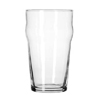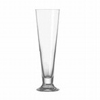What you need to know about beer
Even if you’re not a beer lover, every good host should know a little bit about serving up suds. After all, it’s still America’s favorite alcoholic beverage, with four out of 10 people saying they prefer it to wine or cocktails.
So grab the pretzels because we’re about to crack open some cold hard facts.
what you need to know about beer
a (brief) history of beer
Dating back more than 7,000 years to when ancient farmers first learned to domesticate wild grain, beer is one of man’s oldest inventions. Today, brewers sell more than 35 billion gallons of beer a year, with Americans on average knocking back more than 20 gallons per person.
ales vs. lagers
All beers can be divided into two categories: Ales and Lagers. Ales, which are direct descendants from the earliest beers, are fermented just once and are generally heartier and more malty, or sweeter tasting than lagers. (Malt is a barley or other grain that has been steeped, germinated and dried, then used for distilling.) Think: classic British ales such as Bass and Newcastle
Invented in Bavaria, Germany some 200 years or so ago, lagers are fermented twice and at lower temperatures than ales, and generally feature a crisp, clean taste. Think: European imports such as Heineken, as well as popular American beers such as Budweiser, Miller and Coors.
porters & stouts

hefeweizen, belgian whites & belgian fruit lambics
Crafted with unfiltered wheat, these refined ales all feature a small bit of sediment in the bottle purposely left behind during the brewing process. In general, the mild wheat flavor is accented with citrusy spices or fruit essentials. Think Hoegaarden and Framboise.
pilsners, american lagers & american light lagers
The world’s most popular style of beer, Pilsners originated in the Czech town of Pilsen and feature a distinctive straw-like color and a crisp, hoppy flavor. American lagers have a similar look and taste, although they tend to be fizzier and less flavorful than their European counterparts, often due to the use of cheaper substitute ingredients such as corn and rice. By law, Light Beers must contain 25 percent less calories than the original beer. Think: Pilsener Urquell, Beck’s and pretty much any domestic American beer.
dunkels & bocks
Similar to a stout or porter, these darker lagers feature a bold, slightly spicy flavor with plenty of malt flavor, especially super-strong doppelbock beers. Think: Samuel Adam’s Doppelbock (and a bunch of other German brands you can’t pronounce)
For a fun way to taste and compare different beers, try a beer tasting kit and discover what beer you most enjoy.
Cheryl Says
My favorite way to drink a beer is mixing a light, crisp wheat beer with ice and lime juice in a frosted glass. This is called a chilada! Yum



